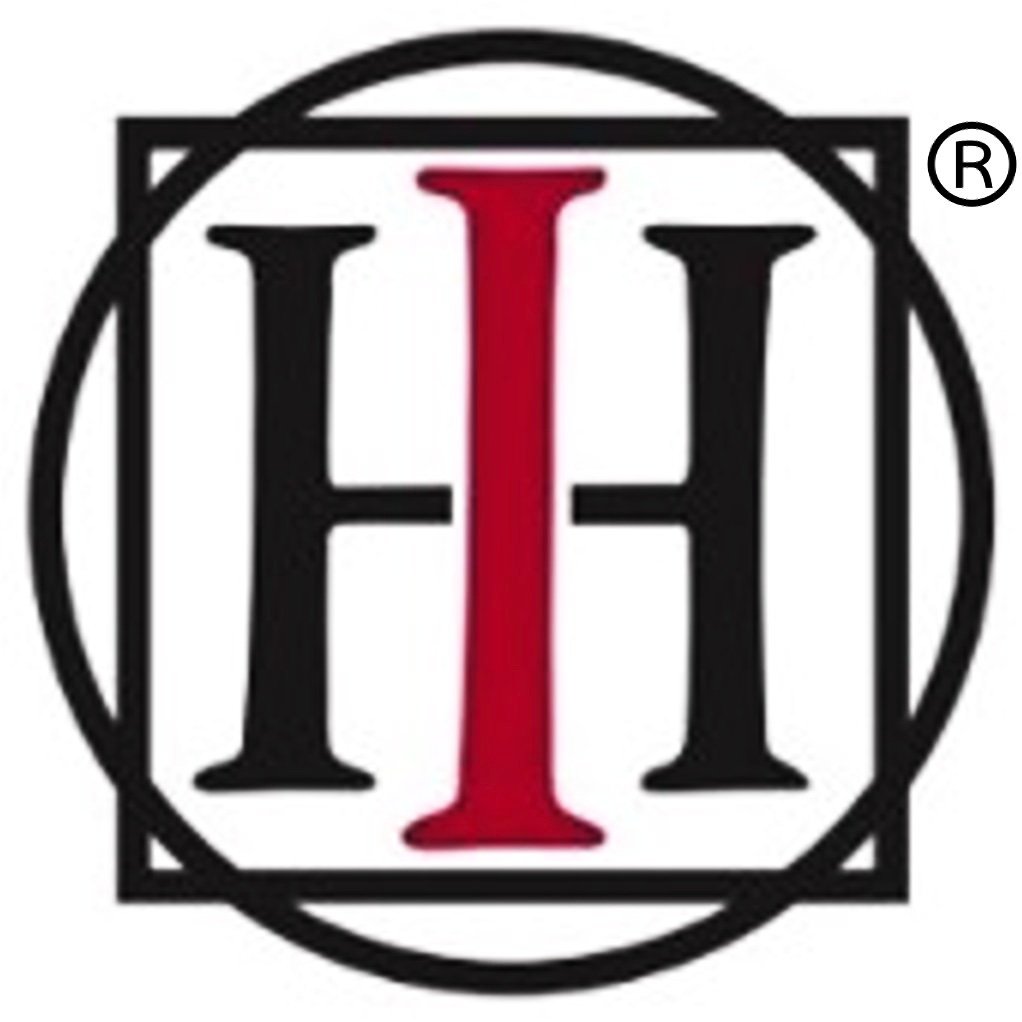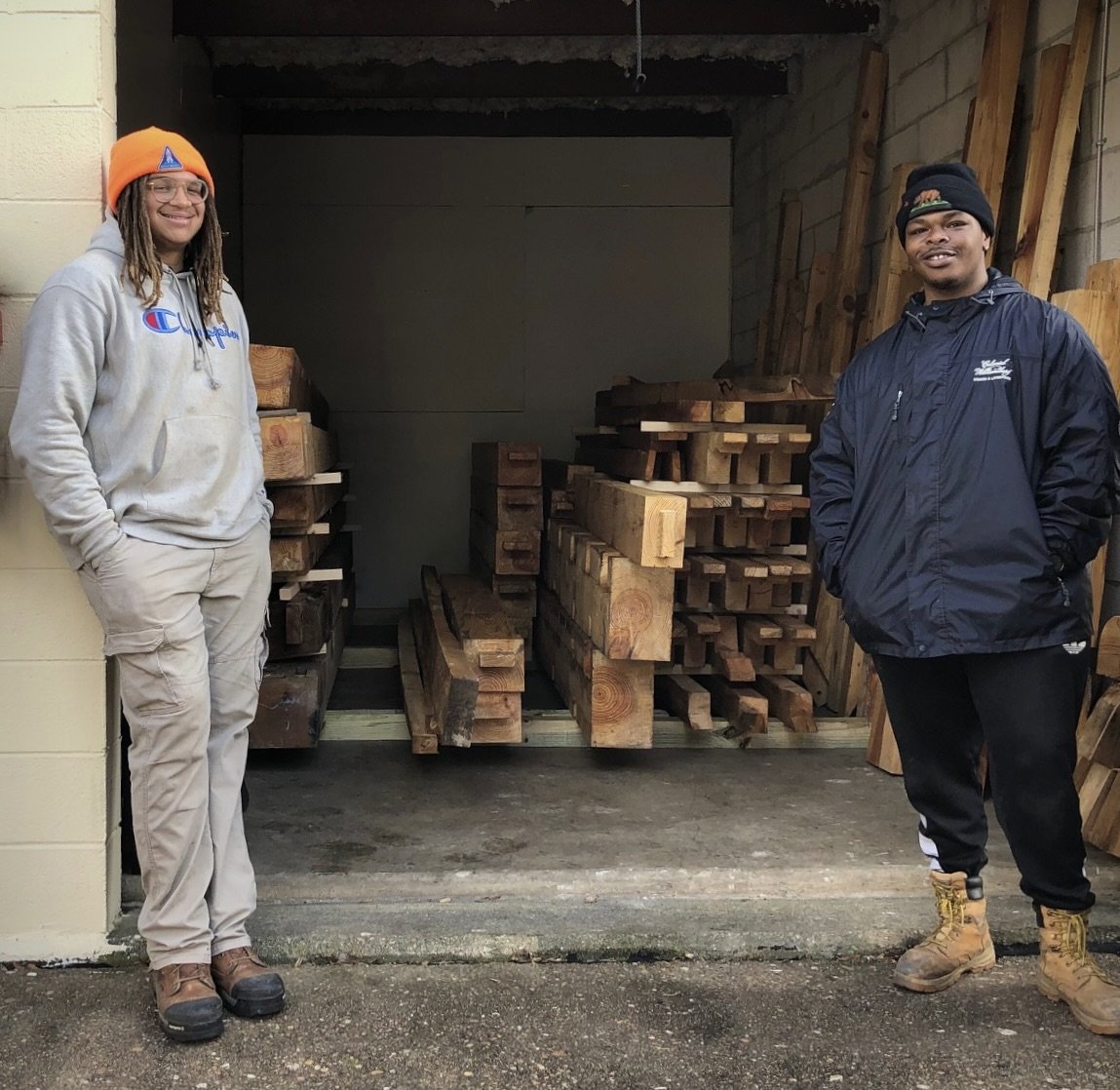Coachman Adam Canaday directs the new memorial Benjamin Spraggins Carriage into the street, bearing Director Undra Jeter and attended by footman Elijah Ford and Collin Ashe.
When your children ask their fathers in time to come, saying, What mean ye by these stones? then ye shall answer them, That the waters of Jordan were cut off before the ark of the covenant of the Lord; when it passed over Jordan, the waters of Jordan were cut off: and these stones shall be for a memorial unto the children of Israel for ever.
Joshua 4:6-7
Last Friday we loaded and removed our Virginia House frame from the Carpenter’s Yard at Colonial Williamsburg. What had slowly risen before the eyes of fascinated visitors over the holidays now lies disassembled and neatly stacked in storage, awaiting our final labor of love in planing the timbers and cutting the chamfered edges.
The next day Diana and I attended an event at the historic courthouse in Williamsburg, dedicating the beautiful new Benjamin Spraggins Sociable Carriage, named in honor of an early carriage driver at Colonial Williamsburg who exemplified in his character and command of his craft what CW represents with its mission, “That the Future May Learn from the Past.”
Coachman Benjamin Spraggins, at Colonial Williamsburg 1937 - 1953
The occasion was introduced by the Rev. James Ingram, Jr. of the Historic First Baptist Church here, founded in 1776 as one of the earliest Black churches in America. Rev. Ingram serves as minister to the present-day church in his own person, and, in one of those providential parallelisms that could only happen in Williamsburg, as minister to the same church in the 18th century in the person of Rev. Gowan Pamphlet, a formerly enslaved tavern worker who served as minister there until 1807. Gowan Pamphlet was the first ordained Black minister of any denomination in America, knowledge of whose importance we owe almost entirely to Rev. Ingram’s twenty-five years of tireless research and advocacy.
Rev. Ingram commenced his brief sermon from the courthouse steps on Saturday with a passage from Joshua, commanding the children of Israel to erect a “monument of remembrance,” memorializing their exodus from slavery in Egypt and entry into the Promised Land. He gestured around him at the historic courthouse, at the newly crafted carriage, at the ancient city itself. What are all these but monuments of remembrance?
Indeed, he said, Williamsburg was all a living monument of remembrance, alive to be visited, alive to be entered into and lived from within. And once inside this city and these buildings, he went on to say, there was nothing so important as speaking with the people who remain as living monuments themselves of a past we all once shared—“Black, White, and Indian”—we all in common who would become the people of the United States of America. Rev. Ingram concluded with a prayer of gratitude, of petition for equality and freedom, and for guidance that we should all be set right, and do right, amen.
Among the five of us who moved the timbers into storage last Friday were two young friends who, between them, represented fewer than half my adult years and more than twice my remaining strength, Collin Ashe and Elijah Ford. The two men made a very welcome addition, without whom I should be today in even more decrepit condition than I am. Collin and Elijah are both apprentice coachmen in the Colonial Williamsburg Coach and Livestock department. A more cheerful or willing pair of volunteers in our exertions I could not hope to find. Whenever I have seen Collin since, he assures me, “If you ever need any more help with that house of yours, just let us know.”
Elijah Ford and Collin Ashe with the Virginia House disassembled in storage.
Just the day after we moved, I was delighted to see Collin and Elijah again, now riding escort as footmen in the new Spraggins Carriage as it made its inaugural way down the Duke of Gloucester Street. The carriage was driven by that irresistibly charming Colonial Williamsburg coachman, Adam Canaday. We have often stopped and spoken with Adam through the years, about history and life and horses.
A week or two ago we stood together discussing training methods while Adam masterfully managed a very frisky Cleveland Bay stallion from the ground. The horse expressed his restlessness with everything from head shaking and wild rearing to slobbering into the wind—with Adam imperturbably downwind of it all—as we discussed the fine points of horseflesh. We talked about the Cleveland Bay’s historic past and its imperiled bloodline, and the plans Colonial Williamsburg has to preserve the endangered breed. We talked about the way that older, less specialized breeds are hardier, and more likely to survive if given a chance. We talked about the way a breed of horse can preserve the past as a living memory.
Coachman Adam Canaday
Yesterday I had a long talk with our county permitting officer, who patiently walked me through the permitting process—again. As in all such matters, we are now at a stage in our Virginia House Project where particular decisions must be made in response to previously unforeseeable circumstances. No one before this time has quite been able to say what we are, or what our house project is, or exactly how to classify it for permits. Sometimes you do not know what you are, or where the path before you leads. On too many counts we fail to qualify as a proper residence—no electricity, no plumbing, no continuous foundations. As the master of our building project, Garland Wood, recently said to me, “I long ago concluded that it is not legal to build a fully 18th century building in the 21st century.”
But permitting agencies require at least some understanding of what on earth you are trying to do. That is, after all, perfectly reasonable. And heaven knows our permitting officials have been models of reason. So we resumed our Socratic dialogue on the subject yesterday. The officer patiently heard me out, then examined the code for the most appropriate classification, something they at the county and we at Innermost House could live with and be happy.
As we waded through the possibilities from a planning point of view—the waters getting deeper the further we went out—our friendly officer suggested that we were really much more like a museum exhibit than a residence. Yes, I said. And we were more like a living museum project than a preserved exhibit. True again. In fact we were more like a kind of living cultural experiment than we were like anything inside a museum. Yes exactly.
In fact, I thought to myself as he paused to consult the code books further, we are more like a kind of memory house, a way of remembering the past that is alive in the present, like a rare, living breed of animal. Or a recollection of an unsettled and impermanent interval in our past that left almost no trace of itself behind. Or a reminder of a time when many different peoples had their own perils to face and rivers to cross to enter the promised land of equality and freedom, as we are still making our way across that river today.
So, he said as he returned to the line, we’ve decided it’s best to permit the Virginia House as a Cultural Property of service to the community. Do you mean, I asked, like a kind of Monument of Remembrance? Yes, like that, he said.
Yours always,
Michael
The Innermost House Foundation is an entirely volunteer organization
dedicated to renewing transcendental values for our age.
IMAGES
Benjamin Spraggins Sociable Carriage, February 2022, by Jerry McCoy, with kind permission of The Colonial Williamsburg Foundation
Coachman Benjamin Spraggins, with kind permission of The Colonial Williamsburg Foundation
Rev. James Ingram as Rev. Gowan Pamphlet, with kind permission of The Colonial Williamsburg Foundation
Elijah Ford and Collin Ashe, by D. Lorence
Adam Canaday, by D. Lorence
Virginia House Plans, Rear Elevation, by Jeffrey Klee
QUOTATIONS
”When your children ask. . .” Joshua, 4:3-7, KJV






